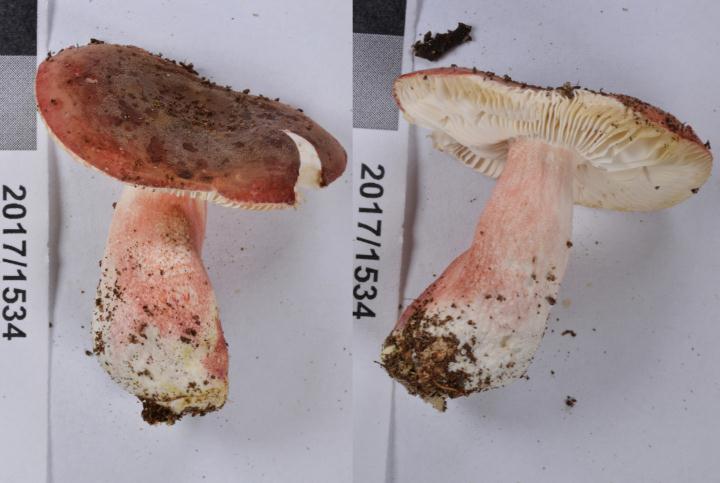- Proposed
- Under Assessment
- Preliminary Assessed
- Assessed
- LCPublished
Russula miniata McNabb
- Scientific name
- Russula miniata
- Author
- McNabb
- Common names
- IUCN Specialist Group
 Mushroom, Bracket and Puffball
Mushroom, Bracket and Puffball- Kingdom
- Fungi
- Phylum
- Basidiomycota
- Class
- Agaricomycetes
- Order
- Russulales
- Family
- Russulaceae
- Assessment status
- Published
- Assessment date
- 2019-07-24
- IUCN Red List Category
- LC
- Assessors
- Cooper, J.A.
- Reviewers
- Dahlberg, A.
Assessment Notes
Justification
Russula miniata is an ectomycorrhizal fungus associated with beech only known from New Zealand. It is only known from just three sites and three collections, but the total number of suitable sites at which it potentially could occur may reach 1000 and the population 30,000 mature individuals. Of the three known sites the type locality (collection from 1968) one now has become farmland, and another modern location is in forest with <10% protected. We don´t not know yet the impact of potential threats of unknown sites.It is assessed as Least Concern (LC).
Taxonomic notes
In general, Russula species are noticeable but difficult to identify. Russula miniata is recognised because of its small stature, red colouration and association with beech (Nothofagaceaea). The genus has been extensively surveyed and studied in New Zealand over a period of 60 years. This species, and most other New Zealand Russula species are sequence barcoded.Geographic range
Russula miniata is endemic to New Zealand.Population and Trends
Russula miniata is readily recognisable because of its small stature, red colouration and association with beech (Nothofagaceae). The genus has been extensively surveyed and studied in New Zealand over a period of 60 years. It is only known from three sites and three collections. The population in at least one known site (the type locality) has gone since the 1960s due to land-use change. Surveying has not revealed additional sites in this area. Over the last five years, 2,500 observers have recorded 54,000 observations of fungi in New Zealand using the iNaturalist platform. 20, 000 observations have been verified by multiple experts. This mushroom has not been seen. Despite this increased level of recording, there is a strong possibility of multiple undetected sites. The total number of suitable sites at which it potentially could occur may reach 1000. The number of mycelial genotypes (functional individuals) per site may be three. Each mycelial genotype is expected to correspond to ten mature individuals, therefore each site would be expected to represent up to 30 mature individuals.The total population size may thus approach 30,000 mature individuals.
Of the three known sites the type locality (collection from 1968) has now become farmland, and another modern location is in forest with <10% protected.
Due to the scarcity of records and ecological data, it is not possible to infer the the impact of potential threats and the population trend at unknown sites.
Population Trend: unknown
